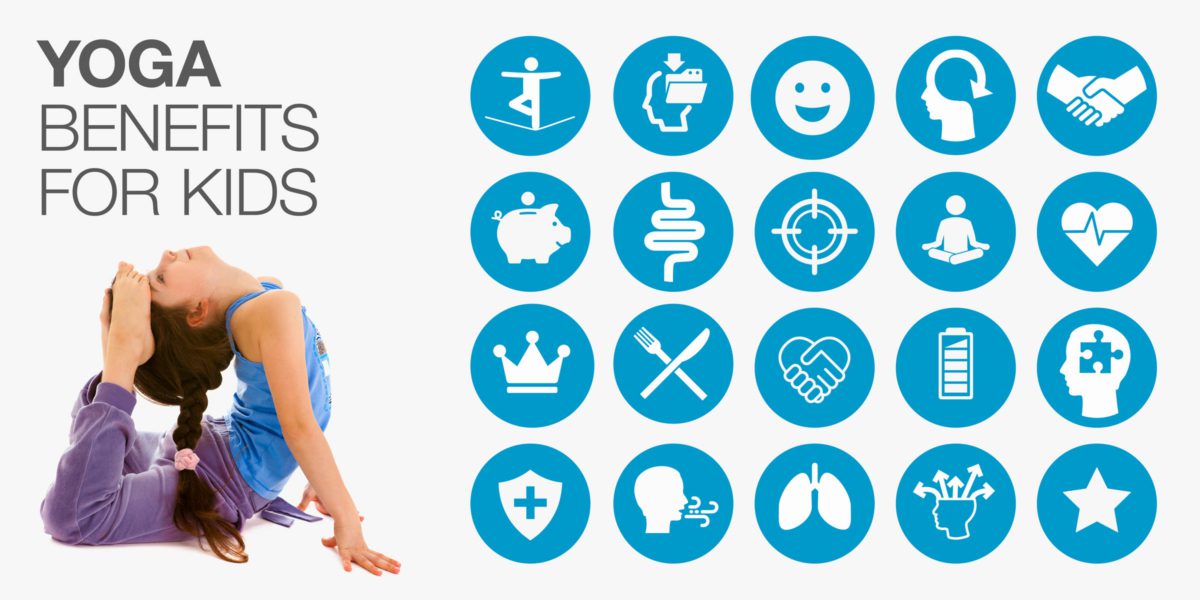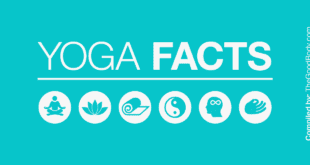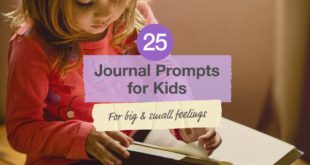In this article we’ll explore in more detail the health advantages of yoga, specifically for young children, backed by scientific research.
You’ll discover the ways in which the practice can inspire and support little minds, laying the foundation for a happier and healthier life.

1: Yoga can help children feel less stressed and anxious
School-based programs have been shown to be particularly useful for managing stress and anxiety.
Researchers from across the world came together in 2014 to look at the body of evidence.[1]
They concluded that an improvement in a child’s overall mental wellbeing, could be noted as a benefit of practicing yoga.
It can help them deal with depression, as well as the everyday stresses of life created by excessive media consumption.
Little yogis were better able to regulate their emotions and demonstrated improved self-esteem, which led researchers to propose additional future research, and also to start introducing it into the curriculum.
A smaller study in Malaysia, focused on third-grade students, revealed similarly positive results.[2]
Through yoga, kids had developed stress-management techniques that helped them to relax.
Why not get started by helping your little one follow the video below:


2: Yoga can boost children’s concentration and focus
Every child struggles to concentrate sometimes, with so many new and interesting things to look at and learn.
In a paper published by the National Association of School Psychologists, yoga was found to help little minds focus more effectively.[3]
One study looked at kids who had attention problems, but had not been diagnosed with ADHD.
Outcomes not only highlighted their enhanced attention span…
Teachers also commented on how enjoyable their students found the practice, particularly when following video instruction.
Cosmic Kids, an online fitness content creator for little ones, conducted their own study after frequent sessions held in schools.
They reported that 96% of teachers had seen a positive change in a student’s ability to focus, with over half describing it as a marked improvement, too.[4]

3: Yoga improves children’s flexibility, strength and balance
Findings from a project conducted at the Federal University of Rio Grande do Sul in Brazil, showed how it boosted the motor abilities of those aged between 6 and 8 years old.[5]
Their scores demonstrated notable improvements in flexibility, as well as strength and balance.
Not only that, but benefits were also seen in their social behavior.
A smaller study published in the Indian Journal of Physiology and Pharmacology, focused on 7-9 year old school students.[6]
After the 12 week strengthening yoga program, improvements in their physical strength were recorded.

4: Yoga can enhance children’s academic performance
Researchers in the US wanted to understand how the practice could improve the quality of life for fourth and fifth-grade students.[7]
Though based on a fairly small sample, the results were conclusive…
It not only helped with self-esteem and self-regulation but they also saw improved academic performance, with a reduction in stress.
Yoga can also do amazing things for a child’s memory.
In a close look at the therapeutic effects, a team of experts identified two different studies where children managed to improve their memory after consistent practice.[8]
However dig deeper and we see that it’s less about improving the parts of the brain that control memory…
It was more about helping to reduce the anxiety and stress that might inhibit a student’s ability to remember things, for example before an exam or test.[9]

5: Yoga can build a child’s confidence and self-esteem
An innovative project looking at 34 orphanage adolescents and young adults, produced interesting results.
Following just two weeks of practice, reductions were seen in both anxiety and depression symptoms, with significantly elevated self-esteem across the group.
Another way to support your little one with their confidence is by encouraging them to find a relatable positive affirmations for kids.
Using the same principles as yoga, it encourages them to focus inward and celebrate everything that is unique and wonderful about them![10]

6: Yoga can help children’s self-control and behavior
In a paper, published in the Journal of Child and Family Studies, researchers highlighted how yogic exercises could improve an individual’s self-control.[11]
A YogaKids curriculum throughout the school year made them less impulsive, and also more able to wait for a possible reward!
Further classroom-based research, demonstrated that children who enjoyed yoga as part of the curriculum, showed significant improvements in behavior.[12]
This was particularly noticeable for second-grade students.

7: Yoga promotes healthy eating in children
If you want to get your kids to eat better, a change of mindset might help.
Project EAT in Minnesota, sought to understand how yoga intervention could encourage healthy eating and exercise.[13]
It was a major piece of work, looking at 1,820 teens and young adults and results were encouraging.
After sessions, participants were shown to eat more servings of fruit and vegetables.
They also consumed less snack foods, fast food and sugary beverages.

8: Yoga helps children get a better night’s sleep
Half of all kids in the US will suffer from a sleep disorder at some point in their childhood, according to recent sleep statistics.
Frontiers in Psychiatry published a study in 2014, that look at how yogic exercises can impact a child’s mental health and wellbeing.
Regular practice had a positive impact on the quality of their sleep.[14]

9: Yoga can be beneficial for children with asthma
A 2019 project at the Tata Institute of Social Sciences in India, aimed to reduce drug dependency and improve asthma control among chronically asthmatic children.[15]
It was a major project, with 450 participants across four different cities.
Those involved had better asthma control and symptoms were reduced.
Amazingly, the education program even helped participants reduce their drug intake.

10: Yoga could have advantages for children with ADHD
Research conducted in 2015, demonstrated the significant impact it could have on the symptoms of ADHD.[16]
Improvements were seen in impulsivity, hyperactivity and anxiety.
A separate study in India, followed 69 students between the age of 6 and 11, for one year as they took part in a yoga, meditation and play therapy program.[17]
Not only were improvements seen in ADHD symptoms, but also in their academic performance which was sustained over a 12 month period.
11: Yoga might help children with autism
48 children with autism, between the ages of 8 and 14, were studied by a team looking at the benefits of the therapy on autism spectrum disorders.[18]
They observed that the majority demonstrated improved symptoms.
These included, increased tolerance of sitting and adult proximity as well as better socialization.
Backed up by quantitative results, data showed immune activity to be regularized.
Looking for more ways to inspire your little ones?
Then why not encourage them to start writing in a journal.
It can inspire them to express themselves and make sense of complicated emotions, using journal questions for kids as a starting point.
References
- Hagen, I. and Nayar, U.S. (2014). Yoga for Children and Young People’s Mental Health and Well-Being: Research Review and Reflections on the Mental Health Potentials of Yoga [Online]. Frontiers in Psychiatry. Available from: https://www.ncbi.nlm.nih.gov/pmc/articles/PMC3980104/ [Accessed 17 July 2023]. ↩
- Nanthakumar, C. (2017). The benefits of yoga in children [Online]. Journal of Integrative Medicine. Available from: https://www.researchgate.net/publication/321800256_The_benefits_of_yoga_in_children [Accessed 17 July 2023]. ↩
- Peck, L.H. et al (2005). Yoga as an Intervention for Children With Attention Problems [Online]. School Psychology Review. Available from: https://www.researchgate.net/profile/Lea_Theodore/publication/242509812_RESEARCH_TO_PRACTICE_Yoga_as_an_Intervention_for_Children_With_Attention_Problems/links/54f3a7900cf2f9e34f07e6e5/RESEARCH-TO-PRACTICE-Yoga-as-an-Intervention-for-Children-With-Attention-Problems.pdf [Accessed 17 July 2023]. ↩
- Cosmic Kids (2016). Kids Yoga in Schools - Our 2016 Teacher Survey [Online]. Available from: https://cosmickids.com/cosmic-kids-teacher-survey/ [Accessed 17 July 2023]. ↩
- Valentini, N., Folleto, J. and Pereira, KeilaR.G. (2016). The effects of yoga practice in school physical education on children's motor abilities and social behavior [Online]. International Journal of Yoga. Available from: https://pubmed.ncbi.nlm.nih.gov/27512323/ [Accessed 17 July 2023]. ↩
- D’souza, C. and Avadhany, S.T. (2014). Effects of yoga training and detraining on physical performance measures in prepubertal children--a randomized trial [Online]. Indian Journal of Physiology and Pharmacology. Available from: https://pubmed.ncbi.nlm.nih.gov/25464679/ [Accessed 17 July 2017]. ↩
- Bazzano, A.N., Anderson, C.E., Hylton, C. and Gustat, J. (https://www.ncbi.nlm.nih.gov/pmc/articles/PMC5903833/). Effect of mindfulness and yoga on quality of life for elementary school students and teachers: results of a randomized controlled school-based study [Online]. Psychology Research and Behavior Management. Available from: https://www.ncbi.nlm.nih.gov/pmc/articles/PMC5903833/ [Accessed 17 July 2023]. ↩
- Galantino, M.L., Galbavy, R. and Quinn, L. (2008). Therapeutic effects of yoga for children: a systematic review of the literature [Online]. Available from: https://www.ncbi.nlm.nih.gov/books/NBK75197/ [Accessed 17 July 2023]. ↩
- Banerjee, S. (2014). Effect of Yoga on the Memory of Middle School Level Students [Online]. IOSR Journal of Research & Method in Education. Available from: https://www.semanticscholar.org/paper/Effect-of-Yoga-on-the-Memory-of-Middle-School-Level-Journals-Banerjee/b52133f64219d5fb85e914ce133a545c0facf0c0?p2df [Accessed 17 July 2023]. ↩
- Metri, K., Tejvani, R., Agrawal, J. and Nagendra, H. (2016). Effect of Yoga on anxiety, depression and self-esteem in orphanage residents: A pilot study [Online]. AYU (An international quarterly journal of research in Ayurveda). Available from: https://www.ncbi.nlm.nih.gov/pmc/articles/PMC5541462/ [Accessed 17 July 2023]. ↩
- Wheeler, S. (2104). Can Mindfulness Help Kids Learn Self-Control? [Online]. Greater Good Magazine. Available from: https://greatergood.berkeley.edu/article/item/mindfulness_help_kids_learn_self_control [Accessed 17 July 2023]. ↩
- Butzer, B. et al (2014). Effects of a classroom-based yoga intervention on cortisol and behavior in second- and third-grade students: a pilot study [Online]. Journal of Evidence-Based Complementary & Alternative Medicine. Available from: https://pubmed.ncbi.nlm.nih.gov/25412616/ [Accessed 17 July 2023]. ↩
- Watts, A.W. et al (2018). Yoga’s potential for promoting healthy eating and physical activity behaviors among young adults: a mixed-methods study [Online]. International Journal of Behavioral Nutrition and Physical Activity. Available from: https://www.ncbi.nlm.nih.gov/pmc/articles/PMC5932774/ [Accessed 17 July 2023]. ↩
- Hagen, I. and Nayar, U.S. (see footnote 1) ↩
- Pandya, S. (2019). Yoga Education Program for Reducing Drug Dependency and Promoting Better Asthma Control for Chronic Asthmatic Children: A Multicity Experiment [Online]. Global Pediatric Health. Available from: https://pubmed.ncbi.nlm.nih.gov/30915390/ [Accessed 17 July 2023]. ↩
- Cerrillo-Urbina, A.J. et al (2015). The effects of physical exercise in children with attention deficit hyperactivity disorder: a systematic review and meta-analysis of randomized control trials [Online]. Child: Care, Health and Development. Available from: https://pubmed.ncbi.nlm.nih.gov/25988743/ [Accessed 17 July 2023]. ↩
- Mehta, S. et al (2012). Peer-mediated multimodal intervention program for the treatment of children with ADHD in India: one-year followup [Online]. ISRN Pediatrics. Available from: https://pubmed.ncbi.nlm.nih.gov/23316384/ [Accessed 17 July 2023]. ↩
- Radhakrishna, S., Nagarathna, R. and Nagendra, H. (2010). Integrated approach to yoga therapy and autism spectrum disorders [Online]. Journal of Ayurveda and Integrative Medicine. Available from: https://www.ncbi.nlm.nih.gov/pmc/articles/PMC3151379/v [Accessed 17 July 2023]. ↩




